#Miriama McDowell
Text
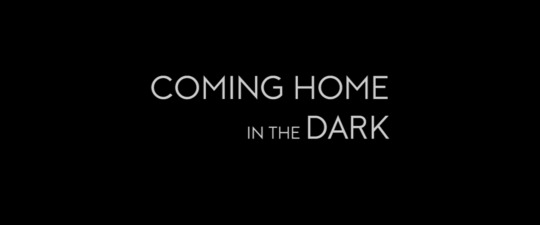
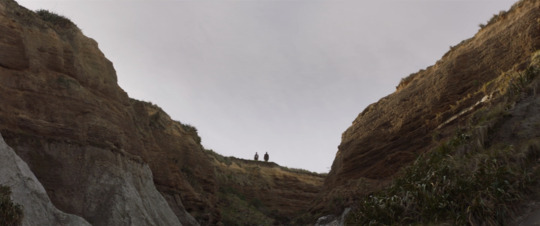


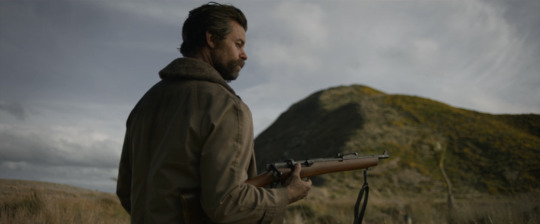

Coming Home in the Dark // James Ashcroft // 2021
#Coming Home in the Dark#James Ashcroft#2021#Erik Thomson#Miriama McDowell#Frankie Paratene#Billy Paratene#Daniel Gillies#Matthias Luafutu#soraskyecinema
4 notes
·
View notes
Text
Character Intro/Fancast Alert
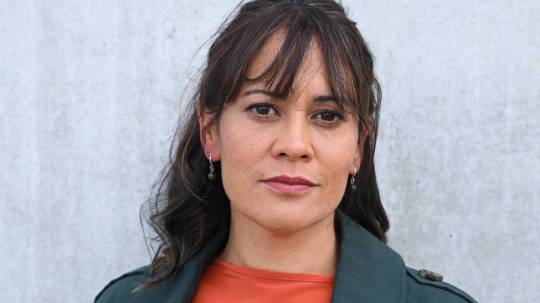
Miriama McDowell as Tina Curry; Tom's younger sister, Arthur's aunt, and Maia's mother, a historian who specialises in Māori culture, knew Atlanna back in the day - and harbors a secret about herself, with her brother being the only other person that knows (until circumstances lead to her telling the rest of her family)
Maia Curry
Tagging (let me know if you want to be added or removed): @shrinkthisviolet
#oc: tina curry#fc: miriama mcdowell#series: aquafam au#aquaman#a side character for the moment but you never know what will happen
2 notes
·
View notes
Text
Koa's Ex-Wife Introduction: Aroha Ahere Nikau
Ok! I had promised @alypink that I'll be showing of what Koa's Ex-Wife looks like! And I'll be sharing small info about her! So here we GO!
General:
Name: Aroha
Full Name: Aroha Ahere Nikau
Alias(es): Aroha, Aro (use to be called that by Koa)
Age: 42
Gender: Female
Nationality: New Zealander
Languages Spoken: Maori (Main Language), English
Date of Birth: November 26th
Place of Birth: Ben Lomond, New Zealand
Height: 5'8ft/172cm
Sexuality: Heterosexual
Marital Status: Single (Divorced)
Universe: Black Ops: Cold War
Faceclaim: Miriama Mcdowell

BACKSTORY:
Aroha used to live a happy married life with the man who she thought she loved.
She was very young when she got married. She was 17 and Koa was 20. The two were always happy during the marriage and she wouldn’t ask anything else but spending time with her lover.
Her family WARNED her about marrying this man because they heard rumors about his father’s attitude after the wife had passed away. She ignored the warning, knowing that Koa would never be like that awful man.
Until after having her 3rd child.
Her husband had started to act strange. He’s been going out most of the time, hanging out with friends and even came home late while being DRUNK.
She was worried, she was anxious, she was ANGRY. She’s tired of seeing him coming home after drinking. So she started to confront him and argued with him. Ignoring him being upset. She suddenly got slapped by him and got beaten up by him.
She was shocked and hurt and confused as to why he would change so suddenly?
She’s even more scared to see him hitting their own kids. She wanted to reach out to her family for help but he knew when she TRIED to.
She’s been putting up with his angry attitude for 16 years. Getting the beating and trying to protect/defend her kids from his wrath. But her emotion couldn’t even TAKE it. So her daughter tried to help her out to get away from her husband.
She even noticed her daughter’s strange behavior as well. Ever since Koa had brought his ‘friend’ over. She doesn’t know why.
Later that night, Aroha was washing the dishes. She heard something from outside of the backyard. She went to investigate before gasping to see her daughter….unalive…suicide. She started to cry before her sons ran in and saw this as well. The 2nd older son quickly pushed his little brother back in the house to avoid looking at their dead sister.
Then ran to his mom to hug her and try to calm her. Before Koa ran in and saw this as well.
After a few days from the incident. She started to stand up for herself and had slammed the divorce papers in front of Koa. DEMANDING him to sign it. She had enough of his nonsense and she has custody to take HER sons away from him.
She thought he was going to beat her up but surprisingly saw him grabbing the pen and signed the paper.
She was confused but wasted no time as she took the papers, packed their things and left the house to live with her brother. The brother gladly took her in and was comforting her from the loss of her daughter.
She knows her brother will be going out to deploy in a few months. Which she is ok with. As long she gets to have a roof over her head and for her sons.
Few years later, Aroha was living her best life with her sons and her family. As she finally moved on from her Ex-Husband. But…she somehow felt like a part of her was missing…even after the divorce.
Trying to ignore the feeling but it would not go. She even wonders what that missing piece is. Until bumping into someone she knew. That missing piece.
Ok! That's about it for Koa's Ex-Wife! So I hope you like her! Love ya peles!😚❤️
7 notes
·
View notes
Text

"Atrapados en la oscuridad"
Existe una fascinación especial por aquellos largos viajes en carretera, recorriendo kilómetro tras kilómetro en la oscuridad de la noche, viendo desaparecer ante tus ojos cada señal de tráfico y perdiéndote en las fauces de la naturaleza mientras devoras esa bolsa de ganchitos que has comprado en la última gasolinera en la que paraste. Es una experiencia única, con un encanto propio y que, desde luego, no siempre acaba como esperas.

Con esa premisa arranca Atrapados en la oscuridad, el prometedor debut como director de James Ashcroft en el cine, al que ya habíamos visto como actor en icónicos títulos serie B del cine neozelandés como "Ovejas asesinas" (2006) o "Fresh Meat" (2012).

Alan (Erik Thompson) y Jill (Miriama McDowell), modélicos padres de familia, disfrutan de un viaje junto a sus dos hijos adolescentes, cuando deciden detenerse a hacer un picnic en un imponente valle. Pero esta idílica estampa familiar se ve interrumpida por la llegada de dos siniestros vagabundos. A partir de ese momento, un inesperado giro de la trama los envuelve en una espiral de violencia.

De hecho, este no es el único plot twist impactante del guion, que fue premiado en el festival Terror Molins, sino que a lo largo del metraje se ejecutan varios con gran precisión, lo que lleva a la cinta a ser una sorpresa casi constante para el espectador.

Y es que, lo que comienza siendo una road movie sangrienta va desembocando en un duelo de titanes con conexiones al pasado entre Alan y el más perturbador de los dos asaltantes, Mandrake, al que da vida un enorme Daniel Gillies (Crónicas vampíricas), sin duda la mejor interpretación de la cinta.

La fotografía y los efectos de sonido juegan un papel clave en el filme, haciendo de la naturaleza y los monumentales paisajes australianos un telón de fondo en el que reflejar la tensión, la violencia y la furia de los personajes.
Explícita y despiadada, la ópera prima de Ashcroft mantiene el ritmo durante casi todo el metraje
Pero, más allá del horror de la muerte y la violencia, lo que más perturba y consterna es la oscuridad de los personajes, la ausencia de compasión, el vacío de unas almas a las que ya no les queda nada 👍👍
youtube
4 notes
·
View notes
Text
anonymous asked: i love the premise of this! please may i ask fc ideas for a female teacher who gives off vibes like miss honey from matilda? thanks so much!

we're glad to hear that! for the fc suggestions, here are some blaise and i came up with: kiley may, alice marcone, miriama mcdowell, melissa o'neil, hivda zizan alp, milk pansa, yvonne orji, prang kannarun, fukuhara haruka, candice patton, simone ashley, laura harrier, emilia clarke, genevieve angelson, nathalie emmanuel, anya taylor joy, demet özdemir, vitoria strada, and greta onieogou.
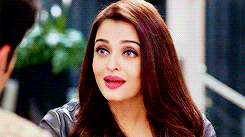
0 notes
Photo


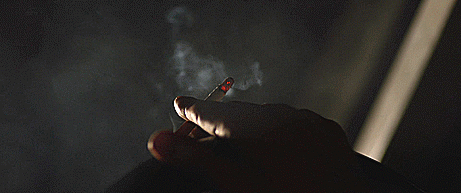
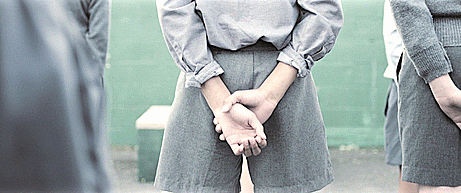
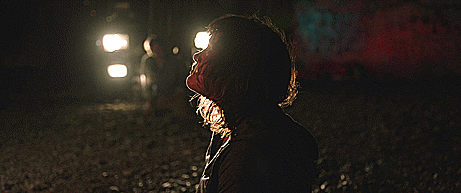

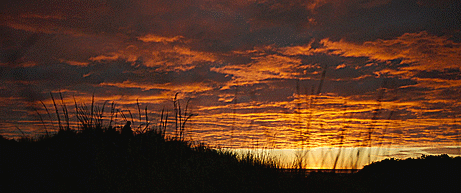
Coming Home in the Dark (2021)
#Coming Home in the Dark#horroredit#James Ashcroft#Daniel Gillies#Erik Thomson#Miriama McDowell#Matthias Luafutu#new zealand#Horror Movies#filmedit#horror
98 notes
·
View notes
Text
Top Ten Film Actresses of 2021
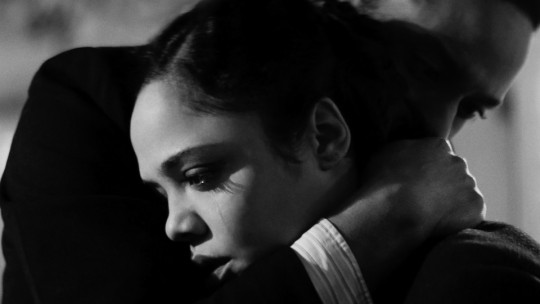

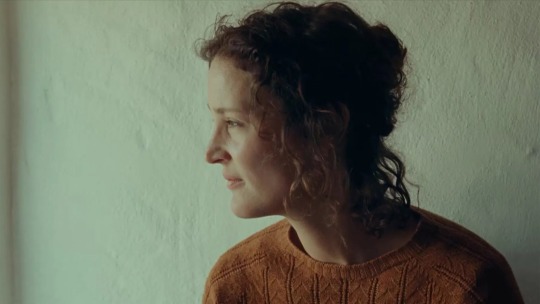
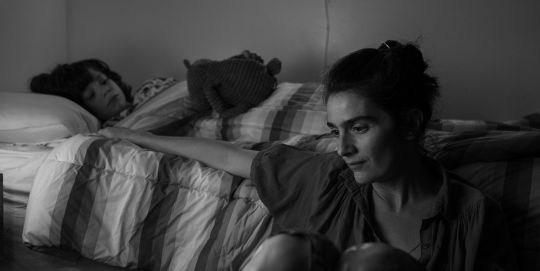
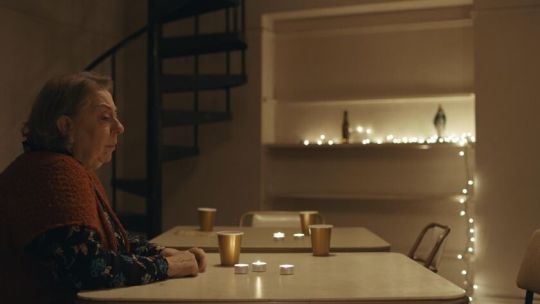




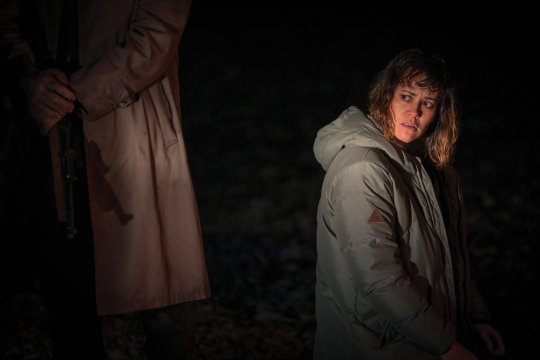
1. Tessa Thompson (Passing)
2. Taylour Paige (Zola)
3. Vicky Krieps (Bergman Island)
4. Gaby Hoffmann (C’mon C’mon)
5. Jayne Houdyshell (The Humans)
6. Aoba Kawai (Wheel of Fortune and Fantasy)
7. Olivia Colman (The Lost Daughter)
8. Ruth Negga (Passing)
9. Marlee Matlin (CODA)
10. Miriama McDowell (Coming Home in the Dark)
I’d be remiss not to also mention: Emilia Jones in CODA, Rebecca Ferguson in Dune, Regina King in The Harder They Fall, Eugénie Derouand in The Advent Calendar, Ingrid Sophie Schram in My Heart Can’t Beat Unless You Tell It To, Mia Wasikowska in Bergman Island
See the Top 10′s from 2020, 2019, 2018, 2017, 2016, 2015, 2014, & 2013!
#Tessa Thompson#passing#Taylour Paige#zola#Vicky Krieps#Bergman Island#Gaby Hoffmann#C’mon C’mon#Jayne Houdyshell#The Humans#Aoba Kawai#Wheel of Fortune and Fantasy#Olivia Colman#The Lost Daughter#Ruth Negga#Marlee Matlin#CODA#Miriama McDowell#Coming Home in the Dark#movies#films#actress#actresses#performances#top 10#top ten#ranking
62 notes
·
View notes
Photo
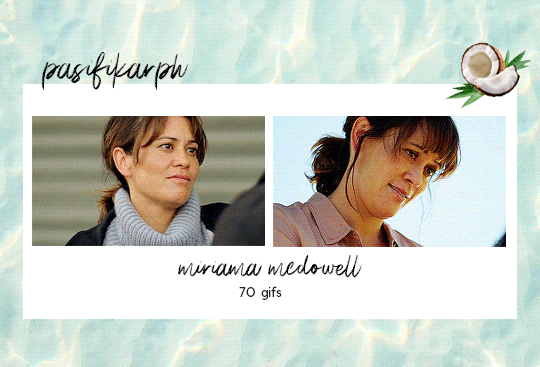
MIRIAMA MCDOWELL - gif pack
the source link contains #70 gifs of miriama mcdowell in head high season one. miriama is approximately 40 years old and is māori (ngāti hine, ngāpuhi)
content warnings: drinking, police officer
#miriama mcdowell#māori#userfyp#olderfcs#indigenousrph#fc of color#gif pack#by tk#cis female#miriama mcdowell gif pack
37 notes
·
View notes
Photo


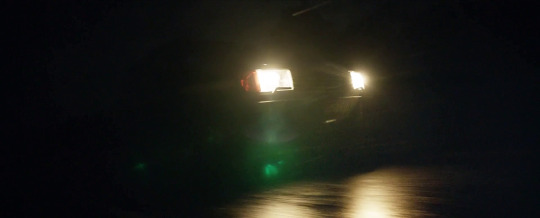
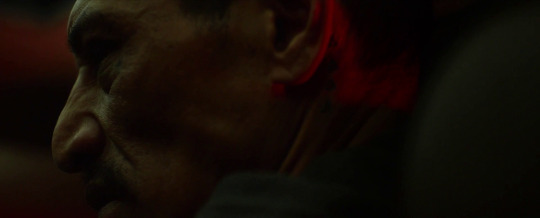






Coming Home in the Dark (James Ashcroft, 2021).
#coming home in the dark (2021)#coming home in the dark#james ashcroft#matthias luafutu#miriama mcdowell#erik thomson#daniel gillies#matt henley#annie collins#philip gibson#kate logan#gabrielle stevenson
23 notes
·
View notes
Photo
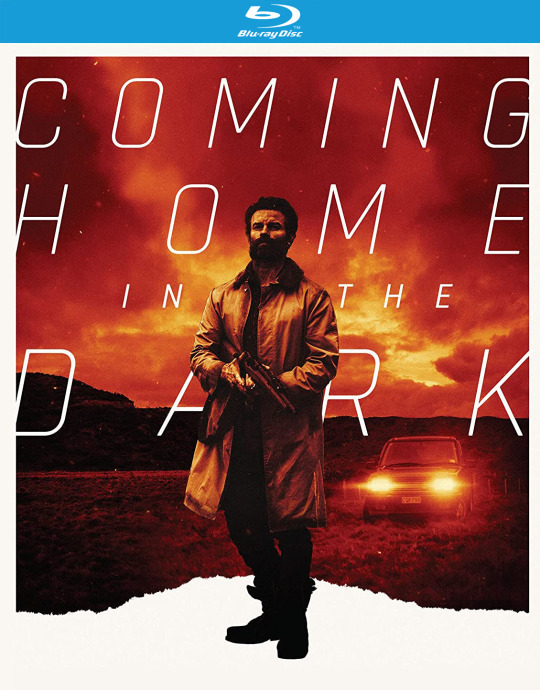
Coming Home in the Dark will be released on Blu-ray and DVD on November 9 via Dark Sky Films. 2021 New Zealand horror-thriller is currently available on Digital.
James Ashcroft makes his feature directorial debut from a script he co-wrote with Eli Kent, based on a short story by Owen Marshall. Daniel Gillies, Erik Thomson, Miriama McDowell, and Matthias Luafutu star.
No special features are listed. The trailer and synopsis are below.
youtube
A family’s outing descends into terror when teacher Alan Hoaganraad, his wife Jill and stepsons Maika and Jordon explore an isolated coastline. An unexpected meeting with a pair of drifters - the enigmatic psychopath Mandrake and his accomplice Tubs - thrusts the family into a nightmare after the duo kidnaps them and embarks on a road trip to hell.
Pre-order Coming Home in the Dark.
#coming home in the dark#horror#daniel gillies#erik thomson#miriama mcdowell#matthias luafutu#dark sky films#horror movies#horror film#dvd#gift#james ashcroft#new zealand
16 notes
·
View notes
Link
*This video contains spoilers for the latest series, Series 7 of The Brokenwood Mysteries*
With the haunting melody of New Zealand singer/songwriter Nadia Reid in the background, this video follows the compelling storyline of DSS Mike Shepherd and Tania Freeman.
For another story with these two, see my fanfic Answers on a Postcard.
#the brokenwood mysteries#mike shepherd#neill rea#tania freeman#miriama mcdowell#te aro#nadia reid#new zealand#brokenwood mysteries#mike/tania#spoilers for series 7#bkwormkatefanvid#bkwormkatefanfic#song from series 4#love their story
3 notes
·
View notes
Photo

Noir Zealand Road Trip.
Breakout noir filmmaker James Ashcroft speaks to Letterboxd’s Indigenous editor Leo Koziol about his chilling new movie Coming Home in the Dark—and reveals how Blue Velvet, Straw Dogs and a bunch of cult New Zealand thrillers are all a part of his Life in Film.
“Many different types of feet walk across those lands, and the land in that sense is quite indifferent to who is on it. I like that duality. I like that sense of we’re never as safe as we would like to think.” —James Ashcroft
In his 1995 contribution to the British Film Institute’s Century of Cinema documentary series, Sam Neill described the unique sense of doom and darkness presented in films from Aotearoa New Zealand as the “Cinema of Unease”.
There couldn’t be a more appropriate addition to this canon than Māori filmmaker James Ashcroft’s startling debut Coming Home in the Dark, a brutal, atmospheric thriller about a family outing disrupted by an enigmatic madman who calls himself Mandrake, played in a revelatory performance by Canadian Kiwi actor Daniel Gillies (previously best known for CW vampire show The Originals, and as John Jameson in Spider-Man 2). Award-winning Māori actress Miriama McDowell is also in the small cast—her performance was explicitly singled out by Letterboxd in our Fantasia coverage.
Based on a short story by acclaimed New Zealand writer Owen Marshall, Ashcroft wrote the screenplay alongside longtime collaborator Eli Kent. It was a lean shoot, filmed over twenty days on a budget of just under US $1 million. The film is now in theaters, following its premiere at the Sundance Film Festival in January, where it made something of an impact.

Erik Thomson, Matthias Luafutu, Daniel Gillies and Miriama McDowell in a scene from ‘Coming Home in the Dark’.
Creasy007 described the film as “an exciting New Zealand thriller that grabs you tight and doesn’t let you go until the credits are rolling.” Jacob wrote: “One of the most punishingly brutal—both viscerally and emotionally—first viewings I’ve enjoyed in quite a while. Will probably follow James Ashcroft’s career to the gates of Hell after this one.”
Filmgoers weren’t the only ones impressed: Legendary Entertainment—the gargantuan production outfit behind the Dark Knight trilogy and Godzilla vs. Kong—promptly snapped up Ashcroft to direct their adaptation of Devolution, a high-concept novel by World War Z author Max Brooks about a small town facing a sasquatch invasion after a volcanic eruption. (“I find myself deep in Sasquatch mythology and learning a lot about volcanoes at the moment,” says the director, who is also writing the adaptation with Kent.)
Although Coming Home in the Dark marks his feature debut, Ashcroft has been working in the creative arts for many years as an actor and theater director, having previously run the Māori theater company Taki Rua. As he explains below, his film taps into notions of indigeneity in subtle, non-didactic ways. (Words in the Māori language are explained throughout the interview.)
Kia ora [hello] James. How did you come to be a filmmaker?
James Ashcroft: I’ve always loved film. I worked in video stores from the age thirteen to 21. That’s the only other ‘real job’ I’ve ever had. I trained as an actor, and worked as an actor for a long time. So I had always been playing around with film. My first student allowance that I was given when I went to university, I bought a camera, I didn’t pay for my rent. I bought a little handheld Sony camera. We used to make short films with my flatmates and friends, so I’ve always been dabbling and wanting to move into that.
After being predominantly involved with theater, I sort of reached my ceiling of what I wanted to do there. It was time to make a commitment and move over into pursuing and creating a slate of scripts, and making that first feature step into the industry. My main creative collaborator is Eli Kent, who I’ve been working with for seven years now. We’re on our ninth script, I think.
But Coming Home in the Dark, that was our first feature. It was the fifth script we had written, and that was very much about [it] being the first cab off the rank; about being able to find a work that would fit into the budget level that we could reasonably expect from the New Zealand Film Commission. I also wanted to make sure that piece was showing off my strengths and interests—being a character-focused, actor-focused piece—and something that we could execute within those constraints and still deliver truthfully and authentically to the story that we wanted to tell and showcase the areas of interest that I have as a filmmaker, which have always been genre.
Do you see the film more as a horror or a thriller?
We’ve never purported to be a horror. We think that the scenario is horrific, some of the events that happen are horrific, but this has always been a thriller for me and everyone involved. I think, sometimes, because of the premiere and the space that it was programmed in at Sundance, being in the Midnight section, there’s a sort of an association with horror or zany comedy. For us it’s more about, if anything, the psychological horror aspect of the story.
It’s violent in places, obviously, but there’s very little violence actually committed on screen. It’s the suggestion. The more terrifying thing is what exists in the viewer’s mind [rather] than necessarily what you can show on screen. My job as a storyteller is to provoke something that you can then flesh out and embellish more in your own psyche and emotions. It’s a great space, the psychological thriller, because it can deal with the dramatic as well as some of those more heightened, visceral moments that horror also can touch on.
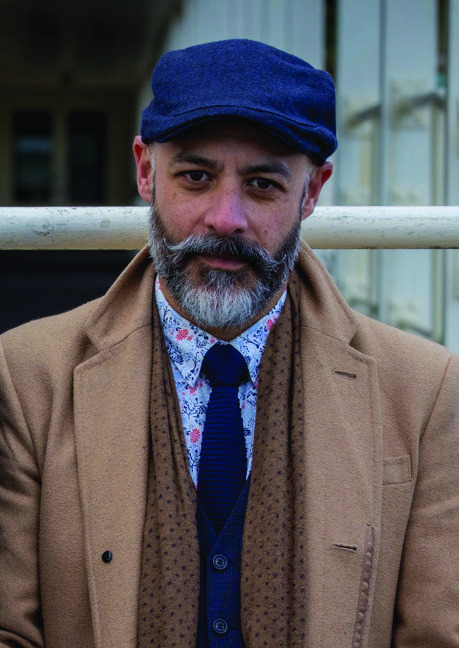
Director James Ashcroft. / Photo by Stan Alley
There’s a strong Māori cast in your film. Do you see yourself as a Māori filmmaker, or a filmmaker who is Maori?
Well, I’m a Māori everything. I’m a father, I’m a husband, I’m a friend. Everything that I do goes back to my DNA and my whakapapa [lineage]. So that’s just how I view my identity and my world. In terms of categorizing it, I don’t put anything in front of who I am as a storyteller. I’m an actor, I’m a director. I follow the stories that sort of haunt me more than anything. They all have something to do with my experience and how I see the world through my identity and my life—past, present and hopefully future.
In terms of the cast, Matthias Luafutu [who plays Mandrake’s sidekick Tubs], he’s Samoan. Miriama McDowell [who plays Jill, the mother of the family] is Māori. I knew that this story, in the way that I wanted to tell it, was always going to feature Māori in some respect. Both the ‘couples’, I suppose you could say—Hoaggie [Erik Thomson] and Jill on one side and Tubs and Mandrake on the other—I knew one of each would be of a [different] culture. So I knew I wanted to mirror that.
Probably more than anything, I knew if I had to choose one role that was going to be played by a Māori actor, it was definitely going to be Jill, because for me, Jill’s the character that really is the emotional core and our conduit to the story. Her relationship with the audience, we have to be with her—a strong middle-class working mother who has a sort of a joy-ness at the beginning of the film and then goes through quite a number of different emotions and realizations as it goes along.
Those are sometimes the roles that Māori actors, I often feel, don’t get a look at usually. That’s normally a different kind of actor that gets those kinds of roles. And then obviously when Miriama McDowell auditions for you it’s just a no-brainer, because she can play absolutely anything and everything. I have a strong relationship with Miriama from drama-school days, so I knew how to work with her on that.
Once you put a stake in the ground with her, then we go, right, so this is a biracial family, and her sons are going to be Māori and that’s where the Paratene brothers, who are brothers in real life, came into the room, and we were really taken with them immediately. We threw out a lot of their scripted dialogue in the end because what we are casting is that fundamental essence and energy that exists between two real brothers that just speaks volumes more than any dialogue that Eli and I could write.

Matthias Luafutu as Tubs in ‘Coming Home in the Dark’.
What was your approach to the locations?
[The area we shot in] is very barren and quite harsh. I spent a lot of time there in my youth, and I find them quite beautiful places. They are very different kinds of landscapes than you normally see in films from our country. We didn’t want to go down The Lord of the Rings route of images from the whenua [land] that are lush mountains and greens and blues, even though that’s what Owen Marshall had written.
I was very keen, along with Matt Henley, our cinematographer, to find that duality in the landscape as well, because the whole story is about that duality in terms of people, in terms of this world, and that grey space. So that’s why we chose to film in those areas.
Regarding the scene where Tubs sprinkles himself with water: including this Māori spiritual element in the film created quite a contrast. That character had partaken in something quite evil, yet still follows a mundane cultural tradition around death. What are your thoughts on that?
Yeah. I’m not really interested in black-and-white characters of any kind. I want to find that grey space that allows them to live within more layers in the audience’s mind. So for me—and having family who have spent time in jail, or knowing people who have gone through systems like state-care institutions as well as moving on to prison—just because you have committed a crime or done something in one aspect of your life, that doesn’t mean that there isn’t room and there aren’t other aspects that inform your identity that you also carry.
It’s something that he’s adopted for whatever reasons to ground him in who he is. And they can sit side by side with being involved in some very horrendous actions, but also from Tubs’ perspective, these are actions which are committed in the name of survival. You start to get a sense Mandrake enjoys what he does rather than doing it for just a means to the end. So any moment that you can start to create a greater sense of duality in a person, I think that means that there’s an inner life to a world, to a character, that’s starting to be revealed. That’s an invitation for an audience to lean into that character.

Erik Thomson and Daniel Gillies in ‘Coming Home in the Dark’.
What is the film that made you want to get into filmmaking?
The biggest influence on me is probably David Lynch’s Blue Velvet. I saw that when I was ten years old. A babysitter, my cousin, rented it. It’s not a film that a ten-year-old should see, by the way. I was in Lower Hutt, there in my aunty’s house, and it was very cold, and there’s a roaring fire going. My cousin and her boyfriend were sitting on a couch behind me, and they started making out. I sort of knew something was going on behind me and not to look. So I was stuck between that and Dennis Hopper huffing nitrous, and this very strange, strange world opening up before me on the television.
I’ve had a few moments like that in my life [where a] film, as well as the circumstance, sort of changed how I view the world. I think something died that day, but obviously something was born. You can see what Lynch did in those early works, especially Blue Velvet. You don’t have to go too far beneath the surface of suburbia or what looks normal and nice and welcoming to find that there’s a complete flip-side. There’s that duality to our world, which we like to think might be far away, but it’s actually closer than you think.
That speaks to Coming Home in the Dark and why that short story resonated with me the first time I read it. Even in the most beautiful, scenically attractive places in our land, many different types of feet walk across those lands, and the land in that sense is quite indifferent to who is on it. I like that duality. I like that sense of we’re never as safe as we would like to think. Blue Velvet holds a special place in my heart.
What other films did you have in mind when forming your approach to Coming Home in the Dark?
Straw Dogs, the Peckinpah film. The original. Just because it plays in that grey space. Obviously times have changed, and you read the film in different ways now as you might have when it first came out. But that was a big influence because there was a moral ambiguity to that film; those lines of good and bad or black and white, they don’t apply anymore. It just becomes about what happens when people are put under extreme pressure and duress, and they abandon all sense of morals. The Offence by Sidney Lumet would be another one, very much drawn to that ’70s ilk of American and English filmmaking.
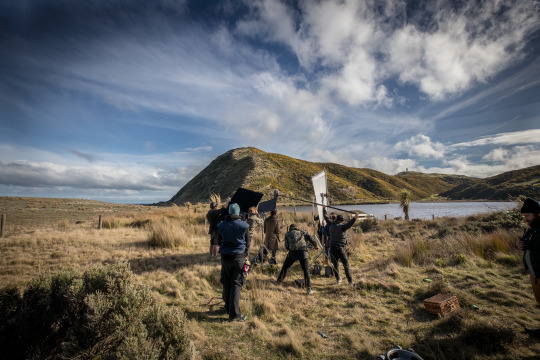
‘Coming Home in the Dark’ was filmed on location around the wider Wellington region of New Zealand.
Is there a New Zealand film that’s influenced you significantly?
There’s a few. I remember watching The Lost Tribe when it was on TV. That really scared me. I just remember the sounds of it. Mr. Wrong was a great ghost story. That stuck with me for a long time. The Scarecrow. Once I discovered Patu! [Merata Mita’s landmark documentary about the protests against the apartheid-era South African rugby tour of New Zealand in 1981], that sort of blew everything out of the water, because that was actually my first induction and education that this was something that even occurred. I think I saw that when I was about eighteen. That this was something that occurred in our history and had ramifications that were other than just a rugby game.
And Utu, every time I watch that, it doesn’t lose its resonance. I get something new from it every time. It’s a great amalgamation of identity, culture, of genre, and again, plays in that grey space of accountability. Utu still has that power for me. It’s one of those films, when it’s playing, I’ll end up sitting down and just being glued to the screen.
It’s a timeless classic. I will admit that when I watched your film, The Scarecrow did immediately come to mind, as did Garth Maxwell’s Jack Be Nimble.
Yeah. [Jack Be Nimble] was really frightening. Again, it was that clash of many different aspects. There was a psychosexual drama there. You’ve got this telekinetic mind control and that abuse and that hunkering down of an isolated family. There are plenty of New Zealand films that have explored a sort of similar territory. They’re all coming to me now.
Bad Blood has a great sense of atmosphere and photography and the use of soundscape to create that shocking sense of isolation and terror in these quick, fast, brutal moments, which then just sort of are left to ring in the air. But I love so much of New Zealand cinema, especially the stuff from the ’80s.
Kia ora [good luck], James.
Kia ora.
Related content
Leo’s Letterboxd list of Aotearoa New Zealand Scary-As Movies Adapted from Literature
Dave’s Cinema of Unease list
A Brutal Stillness: Gregory’s list of patient, meditative genre films
Sailordanae’s list of Indigenous directors of the Americas
Follow Leo on Letterboxd
‘Coming Home in the Dark’ is available now in select US theaters and on VOD in the US and New Zealand. All photographs by Stan Alley / GoldFish Creative. Comments have been edited for length and clarity.
#coming home in the dark#letterboxd#daniel gillies#james ashcroft#maori culture#maori movie#maori director#native director#indigenous film#miriama mcdowell#noir#new zealand noir#leo koziol#imagiNATIVE
3 notes
·
View notes
Text
COMING HOME IN THE DARK - Review
DISTRIBUTOR: Dark Sky Films
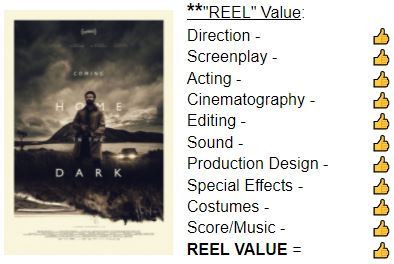
SYNOPSIS: A family’s idyllic outing at an isolated coastline descends into terror when high school teacher Alan ‘Hoaggie’ Hoaganraad, his wife Jill, and stepsons Maika and Jordon unexpectedly come across a pair of murderous drifters - the enigmatic psychopath Mandrake and his hulking man-child accomplice Tubs - who thrust them into a nightmare road trip. At first, the family’s terror seems to be born of a random encounter with two sociopaths, but as the night drags on, Hoaggie and Jill realize that this nightmare of actions that set it in motion 20 years earlier.
REVIEW: Filmmaker James Ashcroft’s COMING HOME IN THE DARKis a gritty and raw thriller that is an emotionally terrorizing film, especially for viewers who are parents. There is a tone to the film that is reminiscent of the early films of Wes Craven, Tobe Hooper, William Friedkin, Meir Zarchi, David Fincher or even Speilberg’s “Duel.” It is a much darker character study set against a lavish New Zealand landscape.
Like several of the earlier works of the filmmakers mention, at its core the film is a character study. Two men were abused when they were younger at a foster care facility. We know that the father, Alan aka Hoaggie, of the family was there at that time, but what is he exactly guilty of? It isn’t 100% clear that he was an abuser, but is that as bad of a sin as having turned a blind eye and not doing anything? The filmmaker makes it clear that they were not the only two victims. As such, Mandrake and Tubs have come upon Alan and his family and Mandrake wants his pound of flesh. The filmmaker presents his tale in such a way that we feel about the same for Mandrake, Tubs and Alan. The filmmaker makes a bold statement by removing any question of innocence in the narrative by removing two characters early on who represent that to a degree. He then does a slow burn as he peels back the layers and we begin to understand who these characters are. What is justice in this instance? Is Alan any different from Mandrake?
Along the way they encounter other people who fall victim to Mandrake’s wrath. One is the hapless victim of being in the wrong place at the wrong time. The other is a group of adolescents who by their actions, or lack thereof, fall prey to Mandrake. It provides the filmmaker with just enough ambiguity as to the true nature of Mandrake.
I’m sure Ashcroft and Kent named the character Mandrake because of some of the implications of the word. Mandrake also feels like the anti-hero from an old western in both his tone and timber. He is out for revenge, but goes about it in a more horror film style with his share of collateral damage. In contrast there is Tubs, who feels like a classic literary observer, he has let the Jin out of the bottle and must watch the deadly results of his wish. In the end it is only by his action that these events can come to an end.
The majority of the film is set outdoors, in cars, at night and minimal locations. It is beautifully shot, nicely edited, and features excellent performances. The entire cast lulls you into a narrative. Regardless of how horrible the events are, you feel you are watching something organic unfold before your eyes. The entire cast is amazing, but you can’t help but feel how special Daniel Gillies' performance is as Mandrake. It is one of those magical screen moments.
James Ashcroft’s COMING HOME IN THE DARK is a mature narrative that deals with potentially real-life situations and trauma as the undercurrent for a gruesome character study. The horror and the gore are not simply there for exploitation but serve as a catalyst and catalyst in this psychological game with deadly consequences. Ashcroft offers no comic relief. Mandrake may offer some sarcastic or ironic dialogue, but it is never present in a way to offer the viewer relief. It is a powerful film with lingering effects on the viewer's psyche. I’m quite sure that James Ashcroft is a filmmaker that we will be hearing more of in the coming years.
CAST: Daniel Gillies, Erik Thomson, Miriama McDowell, Matthias Luafutu, Billy Paratene, Frankie Paratene and Bailey Cowan.
CREW: Director/Screenplay - James Ashcroft; Screenplay - Eli Kent; Based on a Short Story by Owen Marshall; Producers - Mike Minogue, Catherine Fitzgerald and Desray Armstrong; Cinematographer - Matt Henley; Score - John Gibson; Editor - Annie Collins; Production Designers - Philip Gibson & Kate Logan; Costume Designer - Gabrielle Stevenson; Special Effects Supervisor - Doug Falconer.
OFFICIAL: www.cominghomeinthedark.com
FACEBOOK: m.facebook.com/cominghomeinthedark/
TWITTER: twitter.com/chitdmovie
TRAILER: https://youtu.be/kvj24PTQa7Q
RELEASE DATE: In Select Theaters and VOD On October 1st, 2021
**Until we can all head back into the theaters our “COVID Reel Value” will be similar to how you rate a film on digital platforms - 👍 (Like), 👌 (It’s just okay), or 👎 (Dislike)
Reviewed by Joseph B Mauceri
#film review#movie review#coming home in the dark#cominghomeinthedarkmovie#dark sky films#james ashcroft#eli kent#owen marshall#daniel gillies#erik thomson#Miriama McDowell#horror#psychological#revenge#joseph mauceri#joseph b mauceri
2 notes
·
View notes
Text
COMING HOME IN THE DARK (2021) Reviews and overview
COMING HOME IN THE DARK (2021) Reviews and overview
Coming Home in the Dark is a 2021 New Zealand thriller about two drifters who terrorise a school teacher and his family on a road trip.
Directed by James Ashcroft from a screenplay co-written with Eli Kent, based on a short story by Owen Marshall, the Light in the Dark Productions movie stars Daniel Gillies, Erik Thomson, Miriama McDowell, Billy Paratene and Frankie Paratene.
Reviews:
“At a…
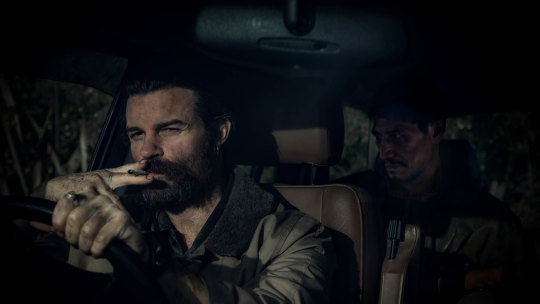
View On WordPress
#2021#Billy Paratene#Coming Home in the Dark#Daniel Gillies#Erik Thomson#film#James Ashcroft#Miriama McDowell#movie#New Zealand#review#reviews#Sundance
2 notes
·
View notes
Text
"Coming Home in the Dark"
“Coming Home in the Dark”
The ruthless crime thriller “Coming Home in the Dark” opens with a brutal sequence of violence that sets the tone for the rest of the film. This is a tough one to watch because director James Ashcroft pulls no punches in showing the evil darkness that lurks within some men, and the tension grows to the point that it is almost unbearable.
Hoaggie (Erik Thomson) his wife Jill (Miriama McDowell),…
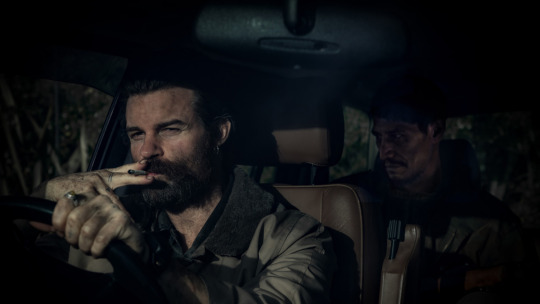
View On WordPress
#Billy Paratene#Daniel Gillies#Erik Thomson#James Ashcroft#Matthias Luafutu#Miriama McDowell#Sundance
2 notes
·
View notes